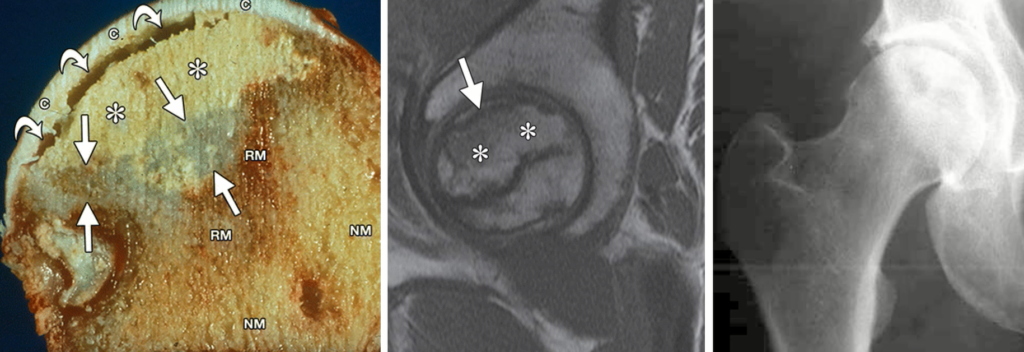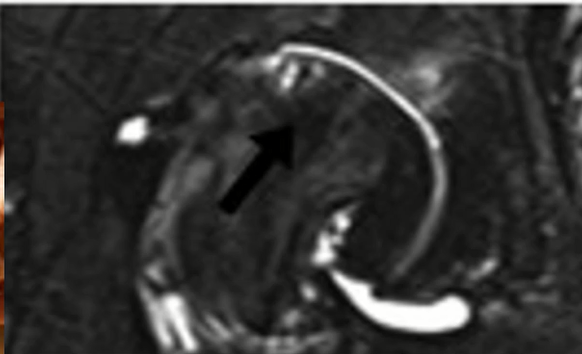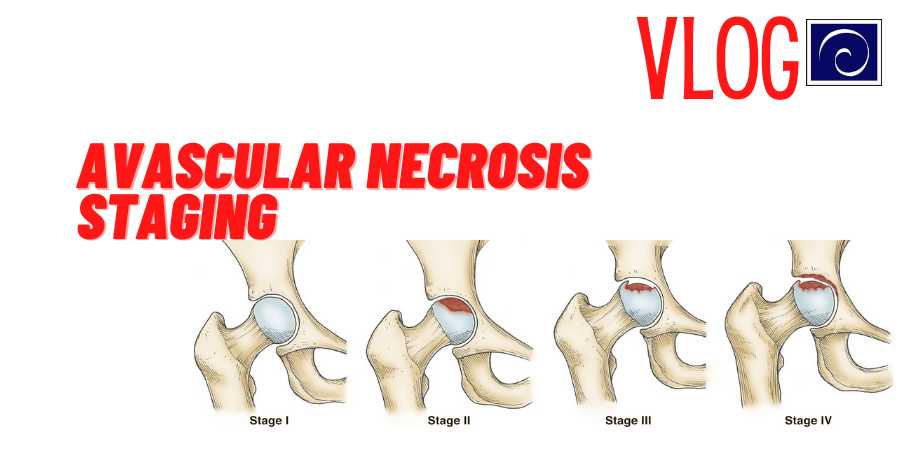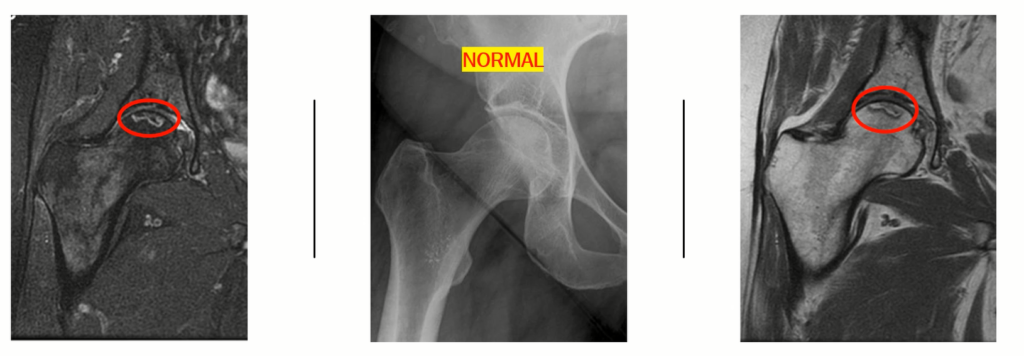Transcript
Hello, Dr. Markle here at Centeno-Schultz Clinic in Broomfield and Denver, Colorado.
Today, we’re talking about avascular necrosis staging. Now, the staging of avascular necrosis is critical in someone’s long term prognosis and moving forward to form an appropriate treatment option.
Avascular Necrosis Staging
Stage 1
So, if we look at Stage One of Avascular Necrosis, typically, from a symptom standpoint, you can have very minimal pain, full range of motion of the joint, pain typically only comes on with any extensive amount of weight-bearing activity.
From an imaging aspect, your X-ray should be normal. If we get an MRI, we will start seeing small areas of necrosis, or loss of blood flow. As that loss of blood flow continues and progresses over time, symptoms start increasing.
Stage 2
Some people have some mild loss of range of motion, at Stage Two. Your X-ray now becomes positive; as well as the lesion that started off very small has now, typically, expanded to a much larger lesion. And as it progresses over time, that necrotic bone eventually becomes starved of nutrition and blood flow.
Stage 3

So, it starts dying off, and that dying of the bone starts changing the architecture of the joint, where you start having a collapse of the femoral head, or of the articular surface. Weight-bearing becomes extremely limiting as well as extremely painful. Pain sometimes goes from intermittent to now more of a constant, persistent pain.
Stage 4

And lastly, Stage Four, you typically get complete degeneration of the bone itself, resulting in the complete collapse of the cartilage or joint surface. And, now, from an analogy, you now have a square peg in a round hole.
How Fast Can Avascular Necrosis Progress?
Progression is very much dependent on each individual person. If we look at literature over time, usually you have a 50 percent chance of it progressing over a three-year period. If you’re asymptomatic, usually, it progresses in about 67 percent of patients. If you’re symptomatic, typically it progresses in 85 percent of patients.
Can AVN Be Reversed?
Typically, the answer to that is “No.”
The likelihood of it reversing from between a Stage One, Stage Two is probably about 20 percent, if not less. The further advanced, the higher chances of it progressing, and the lower likelihood of reversing.
Treatment Options: Avascular Necrosis Staging
Now, the best treatment options over the years have been highly studied in multiple different journals in America and overseas. Dr. Hernigou has published 30-year outcomes on the treatment of Avascular Necrosis utilizing your own repair cells such as bone marrow concentrate precisely into the area of necrosis, that allows the bones themselves to regenerate.
If you’re catching this early enough, in Stage One and Stage Two, it is something that’s potentially treatment for reversal. If it goes beyond stage two, then you’re looking at, well, let’s stop it from progressing and try to minimize someone’s symptoms.
Now, is it very serious?
Yes, it is. Now, Avascular Necrosis is serious to the point where it’s typically a disease that happens in your 20s to the 40s. Now, if it progresses to Stage 4, the ultimate treatment of this is typically a joint replacement, such as a hip replacement, knee replacement, or shoulder replacement.
Now, having a full replaced joint in your early 20s or 40s, probably the likelihood of you needing a replacement beyond that, or repeat surgery, is highly likely. So, our goal, long-term wise, is to prevent the need for a joint replacement early on. And that’s where some of these Regenerative Medicine techniques for shoulder pain become available and are most useful. So, if you’ve been dealing with Avascular Necrosis, or if you know someone that’s been dealing with it, feel free to reach out to us.
We have multiple different ways for you to get a hold of us, whether it be social media or through our website or our direct line. Feel free to give us a call. And if you have any questions, feel free to reach out as well. Have a good day.


